This game’s box art is so fuckin cool.
I started playing Tactics Ogre the last week of april, 2024. I finished it the first week of june. (Happy Pride) In the over 150 hours I’ve been playing my first runthrough, my wife managed to complete
- Final Fantasy (NES)
- Mother 1
- Castlevania II - Simon’s Quest
- Castlevania: The Adventure
- Castlevania II: Belmont’s Revenge
- Castlevania Legends
- Dragon Quest I (NES)
- Dragon Quest I (SNES) (decided it was too easy) (8:7 gang)
- Dragon Quest II NES
- Metroid
- Metroid II - Return of Samus
- Phantasy Star
- The Legend of Zelda
- Zelda II - Adventure of Link
This game has consumed me. It might now be my alltime favourite. 
There’s a part of me that thinks, having just sunk 150-plus hours into Tactics Ogre, (TO for short) that it doesn’t need an introduction, right? An extremely famous, long-revered game that routinely makes Best-Of lists both by readers and editors in Famitsu and shit, right? But by the same token, have you played Tactics Ogre: Let Us Cling Together on Super Famicom, Sega Saturn or Sony Playstation? Well, fucker?? 
Let’s set a ground rule for this post: when people say “Tactics Ogre” on the internet it’s luck of the draw what version they’ll be referring to. Saturn/SFC/Playstation, PSP, Reborn, they’re often even referring to the GBA game Knight of Lodis despite that being a different game. For the posts I’m gonna be forcing you all to cringe through, I’m going to refer to the games like this:
- The original Tactics Ogre, released on Super Famicom in 1995, the Sega Saturn in 1996 and the Playstation in 1997/1998 is Tactics Ogre: Let Us Cling Together or maybe Tactics Ogre Classic, so LUCT or Classic for short.
- The 2011 PSP remake will be Tactics Ogre: Wheel of Fortune, so Wheel of Fortune or WoF for short.
- The 2022 overhaul released for PS4, PS5, Switch and Steam will be Tactics Ogre Reborn, or just Reborn for short.
This post is all about LUCT, mainly on the Playstation, and will use its localisations.
One of the catastrophic things about TO as a whole is that each of the games could have a bespoke, unique subtitle to mark them out, as I’ve done, LUCT/WoF/Reborn, you know. But Atlus bought the rights stateside, so TO initially was translated without the let-us-cling-together subtitle, and then Square went and re-subtitled the PSP remake to Let Us Cling Together in the west. This might have contributed to the search-engine mess that resulted: I find that getting results about the Classic version is extremely difficult, and if you just put in say “tactics ogre elements” you get a messy mix of WoF and Reborn results. They are very different versions.
So Tactics Ogre LUCT has a reputation, clearly, because it’s one of those games that’s an automatic shoe-in on “top ten tackdicks arr pee gee!” type lists, and people will tell you that they’ve heard it’s big. I think in Japan it’s regarded highly alongside the likes of Dragon Quest V and Final Fantasy VI as A Beautiful Husband, one of the late-life Super Famicom Goats, you know. In the west it seems to occupy a space usually reserved for games that didn’t come out here at all: Bahamut Lagoon has a reputation as an epic banger, but no angloid has really played it because the english fan translation was only completed relatively recently. Except Tactics Ogre did (allegedly) come out in the US, it’s been available in english forever! (in gamer terms anyway) And yet not only is it borderline impossible to find info on or coverage of, but literally more people have played late-translations like Front Mission and shit.
All that is to say, Unlimited 漢字 upon the angloid world, because the failure of the Playstation release means us dirty westoids literally do not deserve the game. Tactics Ogre’s appeal, apparently lost on the english speaking world at the time, is one-half its mechanically complex, isometric turn-based tactics with very free-form character building, and one-half its gritty narrative, pitch-black in tone with branching that sometimes exceeds Fallout: New Vegas in scope and complexity.
Tactics Ogre is Episode VII of the Ogre Battle® Series™, and while you’ll recognise places like Zenobia and people like Warren if you played Ogre Battle: March of the Black Queen first, it’s not necessary and the game is self contained. What’s happening is, on the island of Valeria there’s a war on, divided along ethnic lines. The ruling Bacrum people (headquartered in Coritani castle) have done murder and oppression of the Walisters, (just 'cuz, yaknow) coralling them into designated cities to toil in mines, shit like that. The game doesn’t get that deep into whatever ethnic conflict is happening, it’s kind of secondary. The Gargastan guys have just captured Duke Ronway out of Walister-held Amorika castle, and it’s YOUR JOB as Denim (seriously) along with his longtime buddy Vice and his sister Kachua, to go save him and maybe start a liberation army.
The inciting incident is that Vice hears that the knight Lans is rolling through town, the man who killed Denim’s parents and everyone in the port city of Griate years ago, so your gang goes to jump him. Turns out this Lans is the holy knight though, different person from the murder-happy one-eyed dark knight, and he’s leading a band of Zenobian dorks (hi, liberal monarchist Canopus!) looking for work, so you join up to go save Ronway from the guillotine, to the end of putting everybody in power ON the guillotine 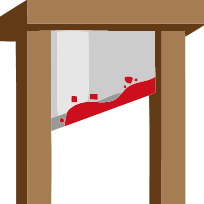
From here, Tactics Ogre is kind of like Fire Emblem, kind of like XCOM: UFO Defense and kind of unlike any other game. I could not discern what games influenced TO the most: certified Big Guy and game planner/director Yasumi Matsuno says it was inspired by chess (uh okay) and the NES game Solstice (?!?) of all things, but I tend to think it’s a little bit of both Shining Force and Fire Emblem, with bonus Cool. It’s a turn-based-tactics game where you move units up to attack other units who counterattack, units have different classes, Kill All Enemies or Kill The Leader, you know. It has the same merciless permadeath as an older FE like Mystery of the Emblem or Genealogy of the Holy War, but turn order sort of reads like an evolution of Shining Force to me. In SF turn order is decided by characters’ Speed stats, but TO uses a thing called Wait Turn, WT. This is a stat that starts at a given value for each unit, and during battle ticks down to 0 with each action on the battlefield, and when it hits 0 the unit can Move and do Actions, (attacks, items, etc, you can do these in any order in your turn) hence turn order. Certain classes have either higher, slower (Knights, Berserkers) values or lower, faster (Archers, Hawkmen) values, and you can lower WT values by giving units lighter equipment, shit like that. Plus WT lowers slightly when you gain a level. The fact that you can influence the turn order so granularly is already awesome, it adds a layer of strategy where none had existed in previous tackdicks gaymes, and it creates a neat rolling dynamic of actions instead of the fixed turns of Fire Emblem or whatever. Pro-tip: navigate to System, then down to L1(or just L) shortcuts, turn em on. Holding L1 and circle lets you see turn order.
Positioning is also pretty important: attacking a Valkyrie from the front presents a high chance of them blocking your attack, side attacks less so, and back attacks pretty much never. Tactics Ogre also has verticality though, which was basically new to tactics games in 1995 as far as I know. TO puts its isometric tiles to use with pretty extreme height variations, like there are sometimes castle ramparts fifteen times taller than a human unit, and you can teleport a Ghost mage up there, or better yet fly a Hawkman up there, and rain down arrows on people. Ranged ballistic attacks, primarily arrows from bows or crossbows are almost a lost cause when firing uphill. If you have to shoot more than maybe six tiles out and like half a unit up in elevation, you might as well just not. Shooting uphill also increases the chance of friendly fire incidents, which are turned on for ALL attacks in this game so watch out. But if your Hawkman is way up high, lording his class superiority over silly Wizards, Clerics and other immobile classes? Not only are arrows more accurate the lower down you fire them, but they also tend to do more damage, almost like it has velocity. This is huge, putting the Hawkman Canopus on top of houses with a shortbow is a great early game way to dominate the battlefield. But height benefits literally any unit, and even getting up just a tenth of a tile higher will improve your shot chances. Plus, even melee attacks benefit if your attacking unit is on a higher tile than their target. Conversely most magic spells are tile-based and ignore height altogether, so even a Siren on the ground can walk up next to a house or parapet and attack units high up, super handy. If you have a shield, you can also do a shield-bash, which moves a unit one tile. The end result of that is that you can not only shove enemies from high places, but also if there’s lava or even an abyss nearby you can just push enemies into lava for damage, or into the void to straight up kill a mf. It’s rad.
Coincidentally, as a little tangent from the elevation stuff, people will call Front Mission for instance a random-number-generator-hell, and it kind of is. Tactics Ogre is not: while there’s an RNG check for whether or not a unit will block/dodge an attack, if you make a save, attack a unit, reload and do it again, doing the same moves, the same result will occur. Attack success is much more down to stuff like elevation, position and facing, the Agility stat, the terrain you stand on which has its own Attack and Defense buff/debuff characteristics, so on. This determinism is cool, because it means reloading 99 times to make sure that Archer hits the enemy Terror Knight juuuust right isn’t applicable. Your strat will either work or not, and it leads to a lot of decision making in-the-moment, This Beast Tamer is wide open for a back attack, but I don’t wanna leave my own Knight’s back open to enemy attack… what’s the next best position to attack from, is the terrain any good? Would this turn be better spent moving to defend?
I’ve talked about classes a bit so let’s dig into that: Ogre has fifty-four fuckin’ classes  you can play as, including fixed classes, named characters with unique classes and beasts. That is absolutely wild to me, how do you fit that onto a Snes cart? Classes in Fire Emblem and even the TO remakes might have fixed stats and specific weapons they can use; classes in LUCT can equip any items, weapons or armour, and units can freely swap between classes as long as they meet certain stat (or alignment, this game has Law/Neutral/Chaos alignment mostly just as a stat) requirements. They also have specific spells they can and can’t use, and preferred weapons they’re better with, but mostly classes are almost more like stat-growth instructions than fixed units. A Ninja has better Dexterity growth than a Knight, a Knight has better Defense growth than a Berserker, stuff like that. Fair play, but the free-form nature of classes opens the door to so much awesome & goofy bullshit.
you can play as, including fixed classes, named characters with unique classes and beasts. That is absolutely wild to me, how do you fit that onto a Snes cart? Classes in Fire Emblem and even the TO remakes might have fixed stats and specific weapons they can use; classes in LUCT can equip any items, weapons or armour, and units can freely swap between classes as long as they meet certain stat (or alignment, this game has Law/Neutral/Chaos alignment mostly just as a stat) requirements. They also have specific spells they can and can’t use, and preferred weapons they’re better with, but mostly classes are almost more like stat-growth instructions than fixed units. A Ninja has better Dexterity growth than a Knight, a Knight has better Defense growth than a Berserker, stuff like that. Fair play, but the free-form nature of classes opens the door to so much awesome & goofy bullshit.
Example: Witches are supposed to be support characters, mostly casting status effects like Stun, Poison, Petrify, so on. They’re kind of made of glass though, so it’s annoying when they get harassed by bruisers who get into your back line. What do you do? Train her (classes are gender exclusive lol) up a few levels after switching her class to an Archer, then retvrn to Witch: this’ll increase her Dex more than levelling as a Witch, and as a result not only will her status spells hit more, but she’ll also be handy with a longbow, and able to defend herself! Conversely if you level her as a Priest, she’ll be better at casting Int spells like Charge and Heal Rain, and have more MP. Some classes are best trained as simply what they are, like Valkyries who use spears and cast attack magic, but this kind of customisation potential exists for every single class, and training them as different classes can lead to awesome builds.
Similarly equipment customisation is very funny. Each unit has four equipment slots, sort of like Omni-mech slots from Mechwarrior 4. A unit can only hold one two-handed sword/bow/axe, and only two one-handed objects or whatever, but beyond that you’re free to fuck around: equip a Hawkman with acrossbow, a phlanka axe, Battle movement shoes and be off! Or load down a Knight with a balder helm, balder plate armour, balder gloves and a balder sword! Stack two different magic-enhancement bands onto a Valkyrie!! Plus the items aren’t limited by class, either: most classes do have a preferred weapon that they’ll do more damage with and a bespoke animation to match, like Lizardmen are hammer specialists and wind up reeeeal big to bonk stuff. But there’s also nothing stopping you from equipping a Hawkman with a spear and flying around to poke people.
One of my favourite combos that I discovered thanks to Internet Video Creation Person Coffeepotato is the Ghost tank. Ghosts are Undead mages, little haunted handkerchief guys, like zombie Black Mages or some shit. Undead units don’t die, they just get downed for a turn cycle and then revive automatically, which fucks. They’re meant to be weaker, more frail units you can teleport around (ignoring height, so you can zip up to high points easily) harassing enemy squads, and they’re pretty good at this role. One weird characteristic of Ghosts though, is that either because they’re undead or because you can move them so far up, enemy units will target them first almost reliably. In the standard mage’s Balder robe this gets them killed pretty fast… but what if you memed them? Bit idea: dress a Ghost up in Balder plate armour with a shield in each hand, and a Mind magic circlet. The end result of this is that you can crash your Ghost right into the midst of enemy squads, and while attacking foes with big spells or putting people to sleep, they will also draw fire, soak up a ton of hits and block even more. It’s a ridiculous meme setup I highly recommend, it’s great for taking out pesky casters in high places.
I might be making it sound like TO is an easy game to break, and it can be, especially if you muck around in the Hell Gate dungeon late-game to unlock dragon magic and lich units, minmax and shit. Playing it normally for the first time however, it can actually be a viciously difficult game, much harder and more unforgiving than a modern XCOM or whatever. Sometimes enemies will form up in well-defended castle entrances across moats, and coaxing them out is a challenge when they have Wizards set up to harass your guys at range. These are the moments when the Tactics part of the Tactics Ogre shines, when you have to specialise your Attack Team for baiting out knights from behind their defenses, or for damage tanking because any fight in a castle throne room becomes a brutal and messy slugging match, it’s fuckin awesome. Like in any good tactics game, the real satisfaction comes from just barely scraping by, pulling out a victory against what seems like impossible odds. Final boss might actually be impossible odds too, preceeded by two other consecutive battles with no healing inbetween. The thing is though, Ogre is still an RPG, and an RPG’s difficulty is kind of determined solely by your willingness to grind.
LUCT has a funny little thingy called Training Mode, which lets you pit your own guys against eachother in mock-battles for XP. On its own this is normal enough, it’s basically easy grinding. The quirk though is in unit control: by default you control the red team against the blue team, but you have options. You can set it so you control both parties, handy for making units not attack so low-level goons can wail on them for XP; you can plug in a second controller and bug a friend or partner to fight you IRL in Ogre; or weirder still you can set both teams under CPU control. If you don’t need to level a specific unit, like you just need the party to level up by one or two, this is very handy, and result in the game basically playing itself. It’s weird but I thought it was charming; sometimes the computer does weird or interesting things with your units, (why does the CPU keep throwing Exorcist units into the front lines, they are not physical fighters) and honestly I didn’t mind some downtime between relentlessly tense fights. I sometimes listened to Youtube videos about the game while it was playing itself in background, I found it cute. You can also just march around the world map fwiw, and there’s a chance to get random battles on non-city areas, which can be a good way to get wild Ghosts and such, since they’re scarce in story battles, but for grinding training is safer usually. You may wanna train before Quadriga Fortress, a necromancer’s domain full of undead and a real early game stumbling block difficulty wise…
Back near the beginning of the game, Denim has freed Ronway and is ordered to go to Baramusa, a city set aside for “Wallister rule” which basically means toiling in the mines. The ostensible goal is to incite the populace to revolt, but Ronway knows this won’t happen, and sends a support army behind Denim and co with the intent to massacre the entire town and blame it on the Bacrum. LUCT has had small dialogue choices to this point, but here is your first big decision: do you help with the slaughter and try to pin it on the other guys, or do you go rogue and split from Ronway’s murder gang?
No sensible person would ever think killing Baramusa residents yourself is a good idea, so most people will pick “No thanks, ‘bro’!” and fight their way out, go on the run. Truly, this is probably the “correct” choice: you’re free to bloody your hands should you please, but LUCT does not try to both-sides this. Not only does every character scream at you for being a murderer from that point on, but Denim sorta becomes a blood-and-soil nationalist looking down his nose at anybody not of Wallister blood. He’s also genuinely kind of an idiot in this path, like when Canopus brings up that he himself is a minority too, all Oberfurher Denim has to say is “…I hadn’t considered that”, like what a dope lol. By contrast the Denim you play when you refuse to do war crimes is a green but very earnest guy just looking to unite Valeria for peace. TO is almost like Fallout, where there are less ‘good’ and ‘evil’ paths, more like the sensible choice and the contrarian one. I’ve been playing the Super Murder Bros run in Reborn, and it’s hard not to feel like a total asshole as people who would’ve rallied behind you spit on your shoes and call you a butcher, it’s great stuff.
I thought the split was gonna be that Vice is always a little murderhobo and Kachua is always the stereotypical good girl, so you’d get to hang with Vice on the murder path and Kachua on the good path, but actually Kachua sticks with Denim no matter what, and Vice is always a contrarian. I was slightly disappointed not to get to hang out with Mr Shitty, but in truth it’s cool to see the two sides of each character depending on your choice here. That’s also the only thing that really stays the same: if you defect like a good little commander, you then fight your way from the port city of Ashton all the way back to Amorika castle as a fugitive, whereas if you do become death, you end up helping harangue the Bacrum flank during Ronway’s assault on Coritani castle. This isn’t just characters’ dialogue shifting, you get different characters as friends and foes, plus an almost entirely different set of battles at different locations and times depending on your choice. This isn’t even the only branch like this: when Defector Denim gets back to Amorika later, you actually have the chance to join up once again with Knight Leonard and the murder gang, or refuse like any sound individual would. It’s all over this game though, characters will live or die based on your dialogue choices or even your sparing them in combat, your path changes majorly at several key forks. I won’t spoil it any further. I’m missing out discussing some really superb story beats by doing that, but it’s really incredible and you should play it yourself. Despite being from the Clinton years, you’ve likely not been spoiled on this game. I’ll probably be doing at least two more runthroughs of this game myself: the Defect run in Reborn but joining up with Leonard at Amorika, and probably a super-murder run of either the Playstation or Saturn game just for fun.
No matter your platform, Tactics Ogre is a beautiful visual masterwork and always has been. It was dismissed by g*mer magazines in the west as “ugly” for the sin of not having polygons, (cool, Playstation Extreme mag) but if you compare it to games around the time like Front Mission, Fire Emblem: Mystery of the Emblem, or even contemporary Playstation games like Arc the Lad… those aren’t bad looking games at all, but there’s no contest, ngl. Ogre convinced me that instance battle screens, ones that cut away, are nerdy. The work Matsuno and his team put into the animations over the last year of development really shines through, like which game’s battles are more exciting to watch? The isometric perspective does worlds for it, the sprites are huge, detailed things, and the fact that the entire game (bar overworld map navigation) takes place in this view is very impressive. In the same way Final Fantasy VI’s unified sprite sets allows the story to blend seamlessly between battles and the overworld, Tactics Ogre’s commitment to its isometry lends story scenes a better grounding than Fire Emblem’s talking head text exchanges (which it was still using on 3DS. Sad!) and allows key pivotal moments to happen mid-battle. The whole game has an FF6-style cinematic flair, I’d say, a lot of characters doing emote poses with very few pixels relatively speaking, and it manages to convey critical, impactful scenes very well. Part of that is down to Hiroshi Minagawa and Akihiko Yoshida’s portraits; I love the character art to death in this game. The portraits are very expressive and there are a few specially drawn for big cutscenes, some characters like Denim and Vice get new looks as the game goes on. Even just looking at art galleries though, there’s a little bit of fun or whimsical sensibility to these soft-faced characters, for this very gritty game. I love almost all of Yoshida’s character work. The battlefields also feel like real, believable places in design terms: you get to see in real-time (turn-based) how opposing knights would defend the courtyard of their palace, or how crowded the streets of Rime are. It’s wonderful.
The localisation work, on the other hand… I think Ted Woolsley would have done a better job, ngl. It’s not lacking for style, like there’s some spirited dialogue lines and I like the couple of colourful swears that various Bad Dudes drop, calling people “removed” or stuff, I actually really like the “feel” of this script. I have to admit that it’s not great in technical terms, though: it has missing punctuation here and there, typos even, grammatical awkwardness, spots an exclamation mark is used where a question mark probably should have gone. The fluff text probably took a worse hit, though: item names are crushed due to limited name length, and descriptions for equipment or spells sometimes come up short, like the spell “Pain” just straight up does not tell you what it does. Given that this was probably done on the cheap and under great technical constraint I’d say it isn’t bad, like it’s not Breath of Fire II, but I might recommend the Saturn version for its updated script.
Tacticsu Ogre is a game of many versions: none are bad today, per se, but the distinction matters. It was originally a 1995 Super Famicom release, and frankly this version with the fan patch by Aeon Genesis is probably what I’d recommend to newcomers. It’s the least fussy, and it ports the Atlus translation from the Playstation so it’s a pretty good facsimile of playing the game in 1998, if anyone had played the English version in 1998. You can play it on real hardware, on a PSP, a Snes Classic, whatever. This is how audiences in Japan first fell in love with the finest turn-based-tactics game there is, and the original soundtrack is super cool.
In 1996, Quest contracted Riverhillsoft to develop a Sega Saturn port in Japan. It supports the 4MB RAM expansion cart, and special care was taken to ensure that the game didn’t exhibit loading hitches anywhere, and bar one ugly pause on the deployment screen it doesn’t! Russian translation group Meduza recently backported the english script from the PSP to it, which given the differences between LUCT and the PSP game, took a lot of original work. The new script is an overall improvement, so that’s cool. The Saturn version features a newly instrumented version of the soundtrack, Japanese V/O for major story scenes and being drawn wrong.  Nerd time:
Nerd time:
Almost all Super Nintendo/Super Famicom games are drawn at an internal resolution of 256×224, same as the NES. That’s a very skinny 8:7 aspect ratio, almost square, but NTSC and PAL television sets would stretch this out to 4:3 automatically, as a result of how the image is “drawn” on a CRT. Rectangular pixels. TO was kind of hard to port to the Saturn, because despite the Sega Mega Drive having had a 256×224 “low res” 8:7 mode, the Saturn’s lowest horizontal res was 320, usually ×224. So there were three options: stretch the pixel art out horribly, a la the Symphony of the Night port to Saturn, draw the 8:7 image in a pillarbox and have it look skinny, or… something weird.
What Riverhillsoft did was draw Tactics Ogre’s battle screen at 352×240. The end result on any TV of the day would have been a very skinny image: the UI elements and menu screens are in fact 8:7 pillarboxed, but the battle screen is squished horizontally. This looks terrible at 4:3, but if you use the Mednaffen Saturn emulator with the Mednaffe GUI, untick “Correct Aspect Ratio” and set scaling to int_multi2, the emulator will display the game with square pixels, which at 352 pixels wide results in a 3:2 semi-widescreen image which is beautiful to behold. The extra screen space is awesome, and I’d recommend this to anybody with the time to set it up.
In 1998, the CIA began a psy-op to convince me that Tactics Ogre came out on Playstation in english, an Atlus-translated and published version of the Japanese Artdink/KuusouKagaku PS1 release. Western state-funded interference aside we do still have the ISO and physical copies, so you can play this. I’ll keep it real with you though, you have to use original hardware, or original hardware settings, don’t. Load times are obnoxious, the game pauses briefly before EVERY ATTACK to stream in sound effects, and it drops frames sometimes, which is wild for a 2D game. I would love to be able to ask the devs at KuusouKagaku (more like KusogeKagaku amirite 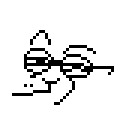 ) why it’s like this. However, you can always just defeat these problems in Duckstation: set CD read speed to 8x, seek speed to 2x and Async read-ahead to 8 sectors. I played almost the entire game through with these settings and did not see an issue. Playstation TO won’t even work on PCSX derived emulators, owing to a weird quirk where the game won’t load from memory cards (on real hardware too, mind) that use compression. It dislikes PCSX format saves I guess, I dunno. At least the music is good.
) why it’s like this. However, you can always just defeat these problems in Duckstation: set CD read speed to 8x, seek speed to 2x and Async read-ahead to 8 sectors. I played almost the entire game through with these settings and did not see an issue. Playstation TO won’t even work on PCSX derived emulators, owing to a weird quirk where the game won’t load from memory cards (on real hardware too, mind) that use compression. It dislikes PCSX format saves I guess, I dunno. At least the music is good.
The music of Tactics Ogre is very subjective when it comes to which rendition anyone prefers, but what’s not subjective is that this shit has a soundtrack that’s as good as Final Fantasy VI. Hitoshi Sakamoto and Masaharu Iwata are underrated as fuck, I don’t know what it is about tactics games but their music always sticks in my head. Front Mission was that way, too. I love Fight It Out, Vendetta, Avilla Henya, Air Land, the load screen music, it’s a top to bottom list of slap bangers. The Playstation port gets flak for its weird midi samples, but I kind of like the more rhythmic renditions of some songs. Avilla Henya is basically a dance number here. 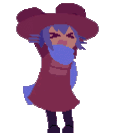
The soundtrack only embeds itself more firmly in my brain, as I go back and play all the different versions of this game. When I completed Front Mission on the DS, I had it in mind to instantly play the UCS campaign, or try the remake, but frankly the 40-odd hours I spent with it was enough for me. Good game, next! That’s usually how it goes with these things, like I had my fill of Final Fantasy IV on PSP when I was done, miss me with that After Years shit. When I finally broke through the final boss of Tactics Ogre, deeply satisfied, it took me less than 24 hours to start another run on the Saturn version, and then dig into the remakes at the same time. Even if the remakes didn’t exist I’d have gone back for at least one more run immediately though, which is unheard of for me even in platformers and shit. This game has rotted my brain, for almost two months there has been nothing but TO on my mind 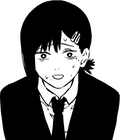 It’s just the right combination, I dunno, I’ve rarely met a game I can put hundreds of hours into, but Tactics Ogre is that game and I love it.
It’s just the right combination, I dunno, I’ve rarely met a game I can put hundreds of hours into, but Tactics Ogre is that game and I love it.
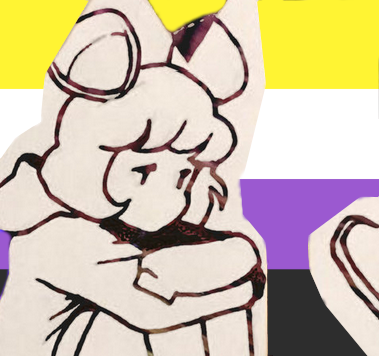
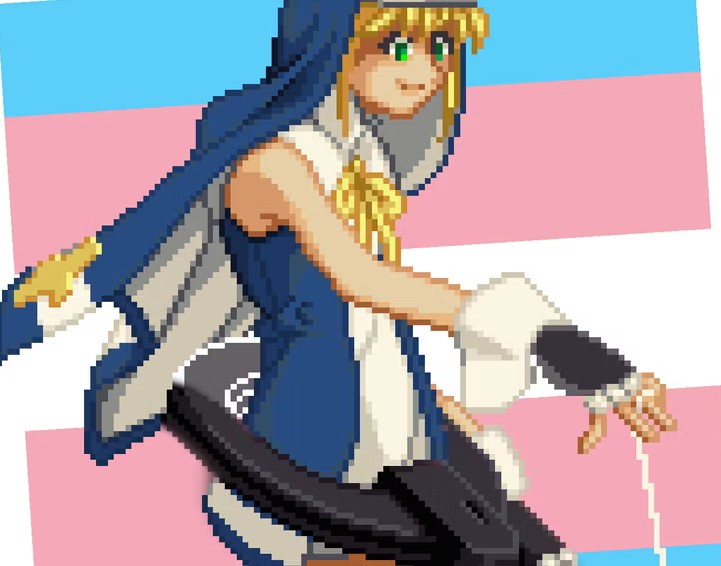
If you don’t already know, squeenix made another game like this called Triangle Strategy. You’ll probably like it if you like the ogre and there’s a demo available too.
I rage quit most of the way through bc I couldn’t get a vote to go my way.
You should finish your playthrough if you wanna get the best ending since you have to finish the game multiple times for it anyway. It’s rough having to trudge through a story you’re not invested in though, I feel that.
This game is in my periphery, pls be good.
If nothing else, the OST is fantastic. It’s peak background music imo